2018 Adventures
When we first arrived to Fussen we decided to head over to the Castle ticket office to check things out. With a small wait in the "reservation" line up I was able to add the second castle tour on to our reservation and move the times up some. So today is the big castle adventure day!
The unique countryside around Füssen has fascinated rulers and kings throughout the centuries. Proof of this is the more than 60 preserved castles, castle ruins and palaces. These include such world-famous ones as Neuschwanstein, the last residence of the
brenda stanger
104 chapters
16 Apr 2020
Europe - Fussen
Day 2 - Fussen
When we first arrived to Fussen we decided to head over to the Castle ticket office to check things out. With a small wait in the "reservation" line up I was able to add the second castle tour on to our reservation and move the times up some. So today is the big castle adventure day!
The unique countryside around Füssen has fascinated rulers and kings throughout the centuries. Proof of this is the more than 60 preserved castles, castle ruins and palaces. These include such world-famous ones as Neuschwanstein, the last residence of the
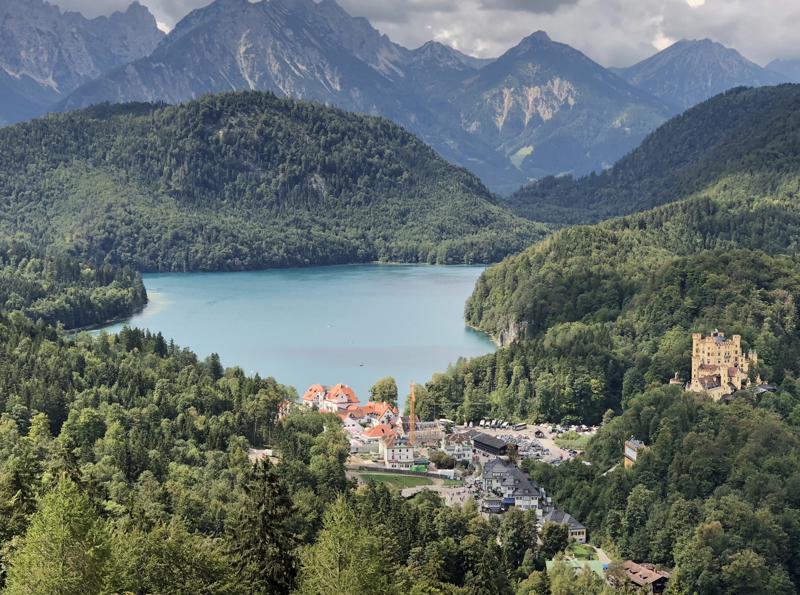
legendary King Ludwig II of Bavaria (1845 – 1886). Less famous, but not less worth seeing, is Hohenschwangau Castle. In particular, the original 19th century Biedermeier furnishings and the Swan Lake Park make it a hot tip for any journey.
The ancient Schwangau castle of “Schwanstein”, which was already dilapidated and uninhabitable when the Schwangau aristocracy died out, was purchased in 1535 and completely rebuilt from 1538 to 1547. The new owner gave it the new name “Hohenschwangau”. Almost 300 years later the Paumgarten building was again in ruins. In 1839 the Bavarian Crown Prince Max, the son of Ludwig I, came to the district of Füssen on the occasion of a “history excursion” with his teacher and acquired this crumbling building.
He had it rebuilt according to ancient extant plans by the architecture
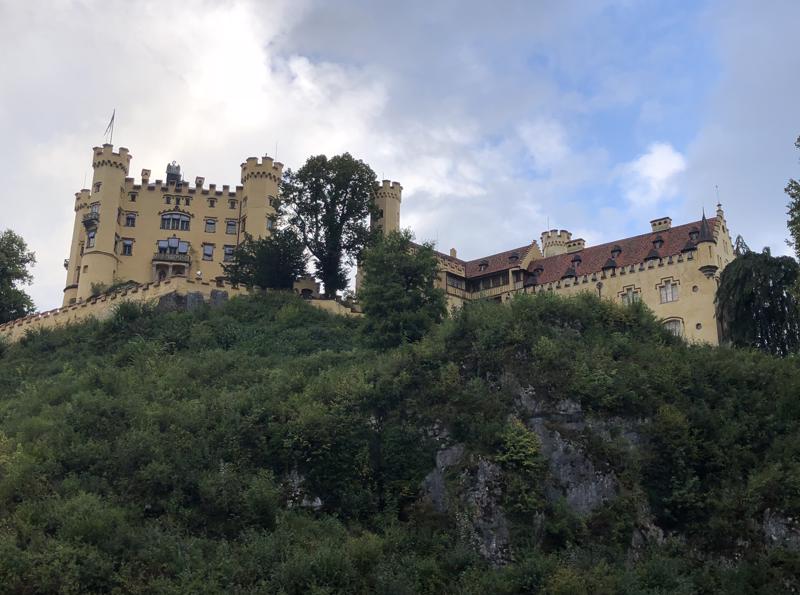
and theater painter Domenico Quaglio. The whole complex lives in the spirit of the romantic era. Such names as the Swan Knight’s Hall, Guelph Room and Hohenstaufen Room are indications of a living attachment to sagas and history. The Castle Courtyard, whose finest ornamentation is the Mary Fountain, is immediately adjacent to the Castle Garden, which is enclosed by a castellated outer wall. In the center of a circular flowerbed is a pool with a water-spouting swan.
If anyone talks about a fairy-tale castle, they usually mean Neuschwanstein. This castle, built from 1869 to 1886, with its breathtaking location and fantastic interior decorations is unique in the world – and an attraction for millions of visitors. The building was intended as a medieval knight’s castle in the 12th/13th-century style. The outer facade of the gateway was completed in 1873. The main building and the adjoining buildings were faced with Schwangau marble from the quarry at Schwansee (Swan Lake). It was modelled largely on the Wartburg in Thuringia. The castle was to consist of five buildings: the gatehouse, the Knight’s Building (the main residential tract) and the keep. The original construction work lasted 17 years and had to be discontinued because of Ludwig’s early death.
By then, of the rooms in the main residential tract only the ground
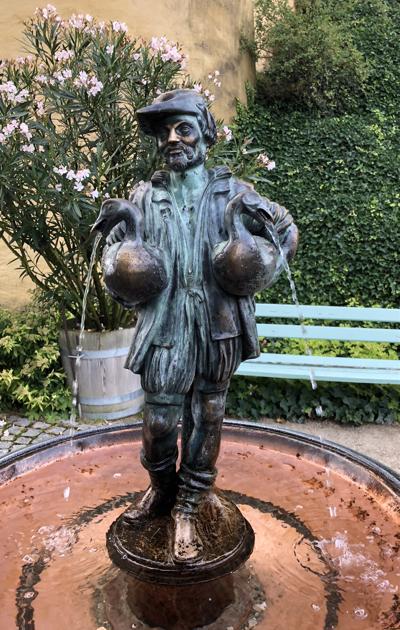
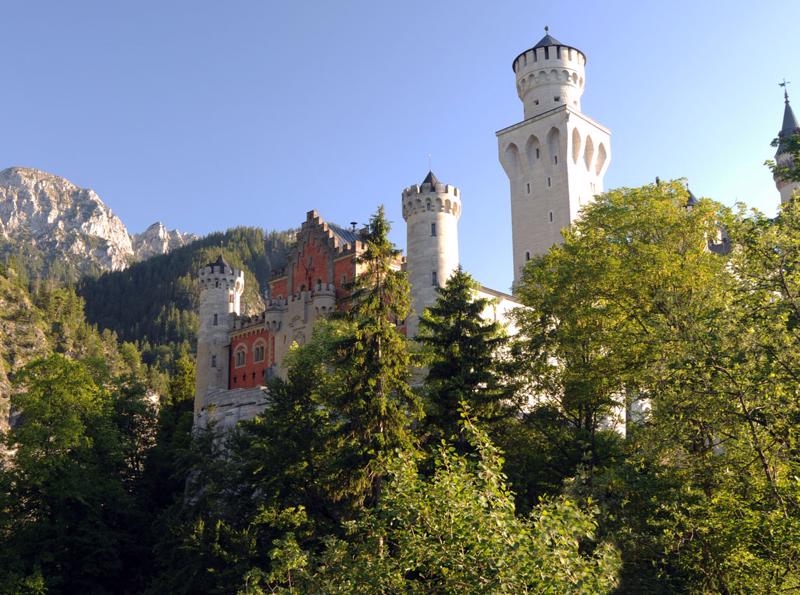
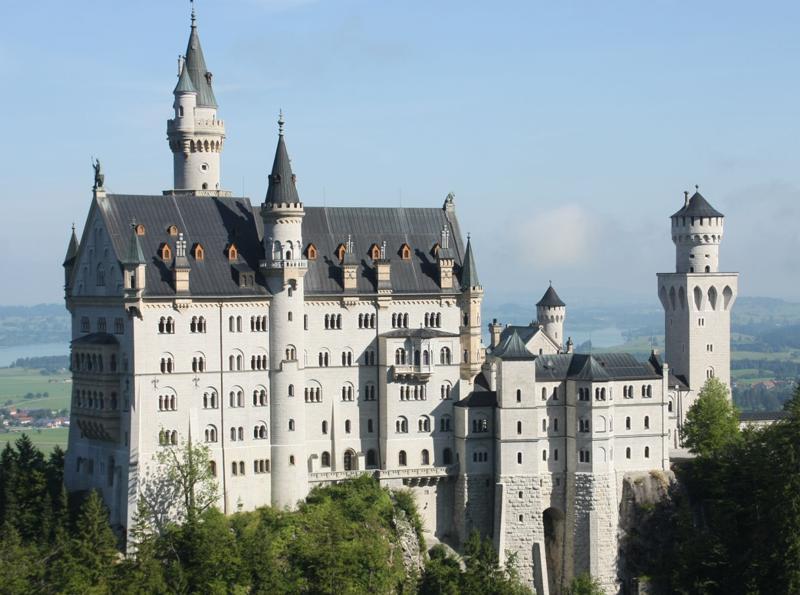
floor (kitchen and adjacent rooms), the third floor (the king’s apartments and the Throne Room) and the fourth floor (Singers’ Hall) had been completed. The rooms are richly decorated with works of the arts and crafts fashioned after the owners favourite opera plays.
More about King Ludwig II:
Even though the German citizens have long been influenced by a democratic republican system of government, their loyalty and love for this king is perhaps unique throughout the world. Deep down in their hearts many of them have remained monarchists, but this allegiance to the monarch is focused on a special person. And that is the king who grew up in their Füssen countryside, who spent most of the years of his life here and who built the most regal of his castles here: Neuschwanstein. He is and will always remain their king.
The Crown Prince by no means enjoyed a carefree childhood. He and his brother Otto (two years younger) were supposed to become accustomed to the burden of royal duties at an early age. They were not allowed to associate with other children and any contact with their parents was reduced to a minimum. The princes’ teachers were convinced that keeping their parents at a distance would promote their independence. The royal brothers spent much of their childhood away from the capital of Munich at Hohenschwangau Castle. Separated from their parents they were brought up by down-to-earth civil servants who kept to the rules and were intent on making the Crown Princes familiar with the realities of the world.
A fantastic natural landscape and a castle-like palace, filled with romantic murals depicting German fairy tales, sagas and the omnipresent swan images, were a formative influence on Ludwig, who was of an imaginative and sentimental disposition. Secretly the youthful Prince began to occupy himself at night with what interested him most: theater, opera librettos and literature. On February 1861, the 15-year-old Prince was deeply moved by his first performance of an opera. Wagner’s Lohegrin was to become for him a key experience. From now on he became one of Richard Wagner’s most ardent admirers and his greatest patron.
Still very young – 18 years old – the Crown Prince ascended the Bavarian throne on March 10, 1864 after his father, King Maximilian II, had died unexpectedly only 53 years old. He could be sure of the support of his subjects: Ludwig, young and attractive, was regarded as the most handsome king and the most popular one with the women of the day.
A very close and personal relationship grew up between the King and his cousin, Empress Elisabeth of Austria, called Sissi. They had much in common and were kindred spirits: Ludwig and Sissi liked to behave unconventionally, loved solitude, hated the constraints of the court, were both keen on education and very well read, especially as far as classical literature was concerned. Both were opposed to war and violence, had a very self-assured attitude towards the church and sought sincere friendship with those in whom they could find disinterested support. Neither of them was spared disappointments.
Loved by his people, but hated by his ministers, Ludwig II was declared insane in 1886 and deposed.

Neuschwanstein would also be his last place of residence before he was taken to Berg Palace on the banks of Lake Starnberg. On June 19, 1886 he mysteriously died in the lake. To this day the circumstances surrounding his death give rise to diverse speculations. Was it an accident while Ludwig was trying to escape, was it suicide or even murder by his political opponents? The legend of the fairy-tale king lives on, for Bavaria and guests from all parts of the world.
It was a very interesting day of visiting the local castles and learning more about the King's of the area. the King's seem very eccentric with all their unique furnishings and tastes. Not to mention the elaborate gifts from the aristocrats in the area and fellow King's and Queens from neighbouring areas.
The interesting part of visiting these castles is that they are restored and have all of the original furnishings and paintings on the walls. With everything in its original location you can imagine what it was like years ago with the aristocrats living here. Many castles and palaces elsewhere in the world have hanging paintings that are framed where in these castles the paintings are done right on the wall with a painted frame around them. It makes for a very "loud" environment with paintings everywhere you look.
Well we are nearing the end of our trip here over in Europe. Tomorrow we head up to Munich for a bit of a tour and then to our hotel in neighbouring Freising.
1.
Year of Travel
2.
Sosua - Dominican Republic
3.
Our Adventures So Far...
4.
Beach Life
5.
Our Favourite Restaurants in Sosua
6.
Fun with Friends
7.
Sosua Continued
8.
Sun, Surf and Sand
9.
Samana Peninsula
10.
Sosua Highlights
11.
USA Road Trip
12.
Texas
13.
Texas
14.
Louisiana - NOLA
15.
Louisiana - NOLA
16.
Louisiana - NOLA
17.
Alabama
18.
Alabama to Tennesse
19.
Tennesse - Nashville
20.
Tennesse - Nashville
21.
Tennesse - Nashville
22.
Tennesse - Memphis
23.
Tennesse - Memphis
24.
Tennesse - Memphis
25.
Summer at Home
26.
Westcoast Adventures
27.
Europe
28.
Europe - Budapest
29.
Europe - Budapest
30.
Europe - Vienna
31.
Europe - Vienna
32.
Europe - Vienna
33.
Europe - Prague
34.
Europe - Prague
35.
Europe - Prague
36.
Europe - Berlin
37.
Europe - Berlin
38.
Europe - Berlin
39.
Europe - Salzburg
40.
Europe - Salzburg
41.
Europe - Salzburg
42.
Europe - Salzburg
43.
Europe - Salzburg
44.
Europe - Innsbruck
45.
Europe - Innsbruck
46.
Europe - Bad Ragaz
47.
Europe - Bad Ragaz
48.
Europe - Lindau
49.
Europe - Lindau
50.
Europe - Fussen
51.
Europe - Fussen
52.
Europe - Freising and Munich
53.
San Francisco
54.
San Francisco
55.
San Francisco
56.
San Francisco
57.
San Francisco
58.
San Francisco
59.
Canada Road Trip
60.
On the Road to Ontario
61.
Ontario - Thunderbay
62.
Ontario - Thunderbay
63.
Ontario - Thunderbay
64.
Ontario - Toronto
65.
Ontario - Ottawa
66.
Ontario - Ottawa
67.
Quebec - Montreal
68.
Quebec - Montreal
69.
Quebec - Montreal
70.
Quebec - Quebec City
71.
Quebec - Quebec City
72.
Quebec - Sainte Flavie
73.
New Brunswick - Bathurst
74.
New Brunswick - Shediac
75.
New Brunswick - Shediac
76.
Prince Edward Island - Charlottetown
77.
Prince Edward Island - Road trip
78.
Prince Edward Island - Charlottetown
79.
Prince Edward Island - More exploration
80.
Nova Scotia - Halifax
81.
Nova Scotia - Halifax
82.
Nova Scotia - Halifax
83.
Nova Scotia - Sydney
84.
Newfoundland - Channel-Port
85.
Newfoundland - Rocky Harbour
86.
Newfoundland - Rocky Harbour
87.
Newfoundland - St. John's
88.
Newfoundland - St. John's
89.
Newfoundland - St. John's
90.
Newfoundland - St. John's
91.
Newfoundland - St. John's
92.
Newfoundland - Travelling
93.
Nova Scotia - Sydney
94.
New Brunswick - Saint John
95.
Maine - Portland
96.
Massachessets - Cape Cod via Boston
97.
Massachusetts - Cape Cod
98.
Massachusetts - Cape Cod
99.
Pennsylvania - Clearfield
100.
Illinois - Chicago
101.
Illinois - Chicago
102.
Illinois - Chicago
103.
Heading Home
104.
Our Year at a Glance
Share your travel adventures like this!
Create your own travel blog in one step
Share with friends and family to follow your journey
Easy set up, no technical knowledge needed and unlimited storage!
© 2025 Travel Diaries. All rights reserved.